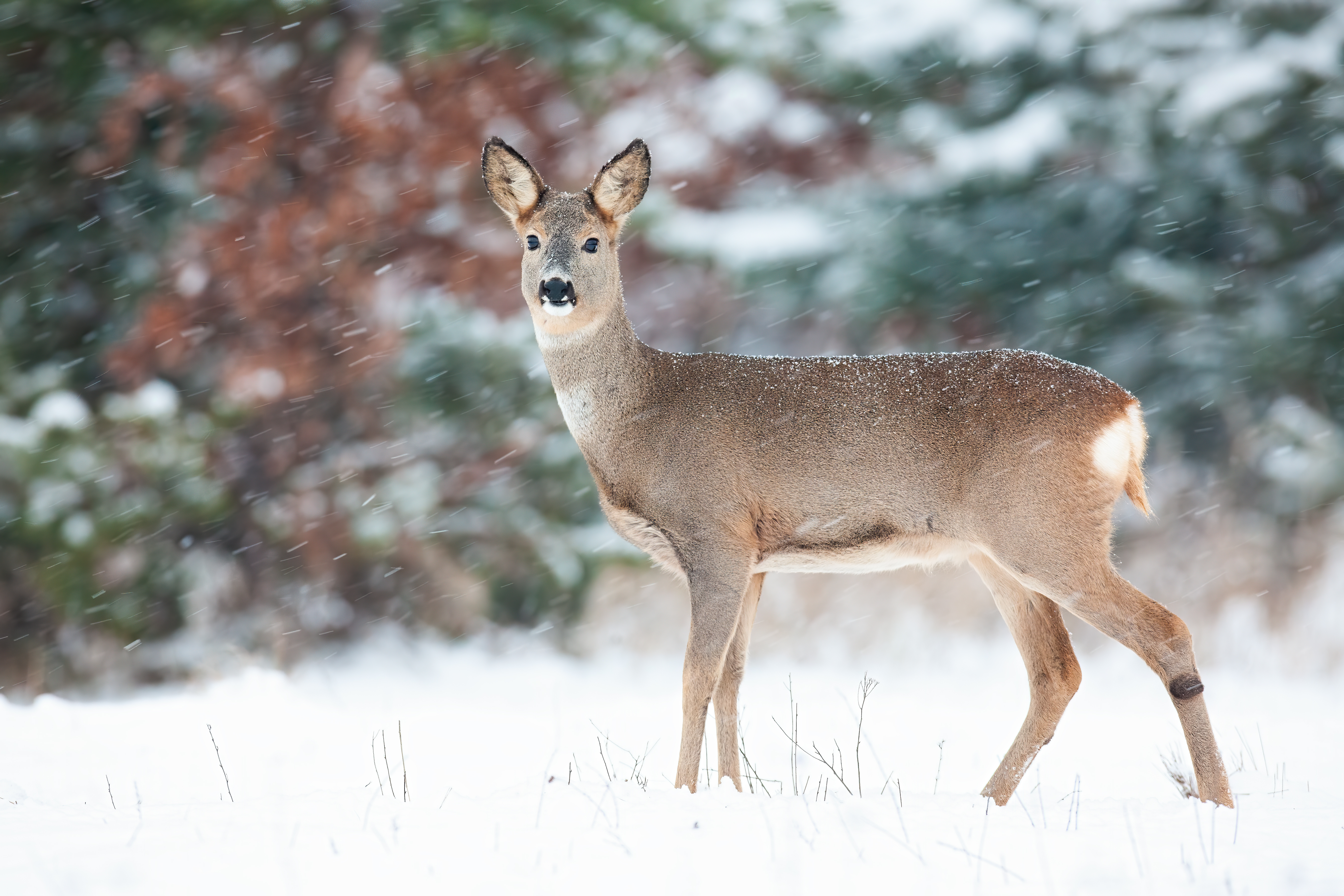
Smart Gardening to Deter Deer
DOWNLOADDecember 20, 2023 - Rebecca Finneran and Sarah Rautio, Michigan State University Extension
It can be heart-wrenching to look out at your prized garden and find your plants have been completely nibbled away. Gardeners have been plagued by deer damage for generations, but why are we seeing more damage than ever to our home landscapes?
As natural habitat is lost to new roads, homes and buildings, deer begin to spend more time in areas populated by humans, such as your backyard. Deer are just as happy foraging in your yard as they would in a natural area. In fact—they may actually prefer what you have planted over their natural diet!
Understanding deer behavior, learning how to divert attention away from your plants and making the garden difficult to access are the best steps you can take towards smart gardening with deer.

Plants deer love
Most deer damage happens during the night, but deer will feed anytime they are hungry on a wide variety of plants. No plant is absolutely deer-proof. There are some deer favorites you may want to avoid.
Evergreen shrubs such as our native cedars (landscape Arborvitae) and yews are some of their wintertime favorites. They will also browse on rhododendron, winter creeper, holly and false cypress. They also like small deciduous trees, such as Japanese maples, and many ornamental shrubs including roses. Herbaceous plants that hold their leaves through winter such as Heuchera will also be a target for hungry deer.
In spring and summer, deer will seek out lush herbaceous plants like tulips, Hosta and daylilies. They may eat newly planted annuals or just yank them out of the ground while taste-testing. In late summer, male deer use the trunks of woody plants that are 2 inches wide or less to rub off their antler velvet. These “buck rubs” can create lasting scars and structural weakness. Deer also love all parts of fruit trees, which makes it important to protect those trees year-round, particularly when they are young.
Make smart plant choices
The best defense against deer is to plant things they are known to dislike. Deer tend to be put off by fuzzy, coarse or “fern-like” foliage, and leaves or stems with strong odors or spines. Some plants less attractive to deer are lamb’s ears, hellebores, ornamental grasses, ferns, catmint, Russian sage, lavender and snakeroot. While deer love tulips, they tend to avoid other bulbs such as daffodil, allium, grape hyacinth and autumn crocus.
As for trees and shrubs, deer often avoid pines, spruces, larches, cypress and boxwood. In spring and summer, forsythia, weigelia, spirea and ninebark attract fewer deer. For late-season color, try callicarpa (beautyberry) or potentilla. More information about recommended species that are deer-resistant can be found on the Smart Gardening page at migarden.msu.edu.
Use repellants to show deer what is off limits
Using a variety of repellants can also be an effective tool to thwart deer browsing. Repellants use three techniques to deter deer—bad taste or scent and fear.
Bad taste and scent repellants often contain ingredients such as capsicum pepper, putrid egg solids and garlic. Fear repellants, on the other hand, contain scents that warn deer of predators, like coyote urine and animal remains.
Motion-sensing noise-makers and water scare tactics are another option. Coupling these devices with some of the repellants can send a clear message your garden is off limits.
All repellants work to some degree, but deer can acclimate to one, so rotate them using several different types. Be consistent about reapplying to keep the repellant fresh. After consistently encountering your repellants, deer will change their traffic patterns to avoid your yard and you may be able to then reduce repellant use.
Unfortunately, repellants may not totally deter deer. Repellants lose their taste and scent from rainfall or irrigation. They also cannot protect new leaves and shoots that emerge after your application. In winter, deer are more desperate for food and may tolerate repellants. Your only option may be to cover or block deer from plants, shrubs and trees.
Barriers that work
One sure-fire way to stop deer browsing is to fence your whole yard, which can be costly and otherwise undesirable. Physical barriers such as wraps, netting and small fencing are much more practical. Even though deer can leap over a 6-foot fence, they are sometimes reluctant to enter a smaller area like a fenced bed of Rhododendrons or yews.
Consider attaching netting to stakes with staples, twine or zip-ties to protect larger plants. Old tomato cages, wire-hanging baskets and milk crates can be anchored in place with tent stakes to cover small plants. Be sure the holes are small enough that they cannot squeeze their noses in between.
You can also protect young trees from buck rub by wrapping trunks with plastic or paper tree wraps. Be sure to occasionally replace wraps to avoid moisture build up or insect infestation. Young trees can also be protected with wire fence cages that are supported with stakes.

Take action now to avoid unwanted deer activity in your garden. Just remember these three smart gardening tips:
- Choose SMART plants that deer do not like.
- Apply SMART repellents to deter deer.
- Create SMART barriers to block deer.
For more information on a wide variety of Smart Gardening topics, visit www.migarden.msu.edu or call MSU’s Lawn and Garden hotline at 1-888-678-3464.
This work is supported by the Crop Protection and Pest Management Program [grant no 2021-70006-35450] from the
USDA National Institute of Food and Agriculture.



 Print
Print Email
Email






